Landscape Architecture for Landscape Architects › Forums › GENERAL DISCUSSION › Wytold says Hi Line depends on architecture around it
- This topic has 1 reply, 4 voices, and was last updated 14 years, 7 months ago by
 Jason T. Radice.
Jason T. Radice.
-
AuthorPosts
-
May 15, 2011 at 2:24 pm #162930
 Trace OneParticipant
Trace OneParticipanthttp://www.nytimes.com/2011/05/15/opinion/15Rybczynski.html?_r=1&ref=opinion
Interesting op-ed by our favorite architect Wytold Rybiczinsky (sp) who loves to opine about landscape. He says the success of Manhattans’ High Line is dependent on:
1. the variety of the dense architecture around it and
2. The dense payscales that are making it happen – including a local park tax
He also call’s it something like ‘relentlessly hip’ which I think is a good turn of critical phrase..
anyone who has been there, do you agree with Wytold, that the Hi Line depends on the architecture around it?
May 15, 2011 at 3:21 pm #162948 Jason T. RadiceParticipant
Jason T. RadiceParticipantWitold is correct, as usual. Right now it is a tourist attraction…people want to see something new, that is the attraction. You do get some good views of some nice architecture, and that is the context that surrounds it. It could work no where else.
Why on earth would you lug yourself up 30′ into the air to walk on an old railroad trestle for any other reason. Mostly, you see people walk through, and stay maybe five minutes at the overlook above the street. Other than that, they keep moving. A few rest on the horribly uncomfortable movable lounges that I think they got surplus from Gitmo. As a landscape, it is quite unremarkable. It is fake nature. Green roof medium and a variety of pretty perrenials…all which require an obscene amount of maintenance. So much for natural. The concrete thingies are awkward, present a tripping hazard, and the expansion joints could have been handled better. There is absolutely no winter interest whatsoever in the plantings or the architecture. I would have preferred a more naturalistic type pathway and just let the plants grow as they were with minimal human involvement. I would have also chose to handle the paving a bit different to maintain the abandoned railway appearence much more accurately. The plants have gotten so overgrown, thay you can no longer see the remaining thrackwork. Give it another few years and it will not be as important or as visited as it is now. Just another unused expensive park.
May 15, 2011 at 3:34 pm #162947 Trace OneParticipant
Trace OneParticipantOK, Jason, good throw-down!.
Have you been to the “green park” in paris, whatever it is called, that everyone compares the Hi L. to? I would be interested in your observations regarding that s that one..
I haven’t been to either
: (
so for once I want to listen to others ideas…
(this reply meant to be posted after Jason’s ..should have ‘replied’ instead of ‘posted’ ..)
May 15, 2011 at 3:52 pm #162946 Jason T. RadiceParticipant
Jason T. RadiceParticipantI’ve been to the highline a bunch of times. My last trip to NY was to see some iconic LA installations, how they have held up over the year(s), and what they are like in the winter. (BTW, its freakin windy up there in January)
Never been to Paris, but that park looks really cool. Like most things French, the 2nd Empire architecture is absolutely beautiful. The highline looks down primarily on old and plain industrial/warehouse buildings, this IS Chelsea afterall. Some newer and modern buildings have sprung up near the highline and have some interest, but not much. The plantings in Paris are much more formal and seem to be more of a display/botanic garden than anything else.
The highline is too modern in its component design…so iit will become dated in a few years. The Promenade Plantée is classical, which doesn’t ever go out of style. And I’m a bit of a modernist in design (using classical materials).
One good thing about the highline it shares with Paris, if you come from the north on the highline and end the furthest stairs south, you end up at Chelsea Market, which has some rockin’ food.
May 16, 2011 at 10:48 am #162945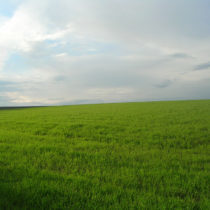 idaParticipant
idaParticipantClassical and modernism can be timeless, but definitely out of style and dated in regard to current ideas.
The article is pretty much right that it sees the problem with the way cities are built and why the High Line affect will not work everywhere. It’s not really a critique on the High Line itself.
May 16, 2011 at 2:39 pm #162944 Trace OneParticipant
Trace OneParticipantI don’t know, Ida, I get a pretty negative feel from the article – ‘relentlessly hip’ is not exactly a postive thing to say, and he seems to me to be saying overall the design depends on the interesting architecture right next to the High Line..Fairly insulting, I think. I don’t believe anyone would say the design of Prospect Park in Brooklyn depends on the neighborhoods around it..Or other great designs – Paley Park..Dumbarton Oaks..
May 16, 2011 at 3:44 pm #162943 Jason T. RadiceParticipant
Jason T. RadiceParticipantPaley Park only exists because of the architecture that surrounds it. I think he was also getting to the point that, like Paley. the architecture defines the space of the highline because there is no other verticality on it. The buildings create enclosure. I’m providing some photos fo y’all. I agree that the neighborhood makes it somewhat sucessful, but its primary use by residents of the area is that of a running track. The several times I have visited, it was joggers (who like it because they don’t have to break stride at every corner), and TOURISTS. I think Witold underemphasized the sheer number od looky-loos that make up the bulk of uses, that will wear off in time. Look at my photos, EVERY ONE of the people there are tourists.
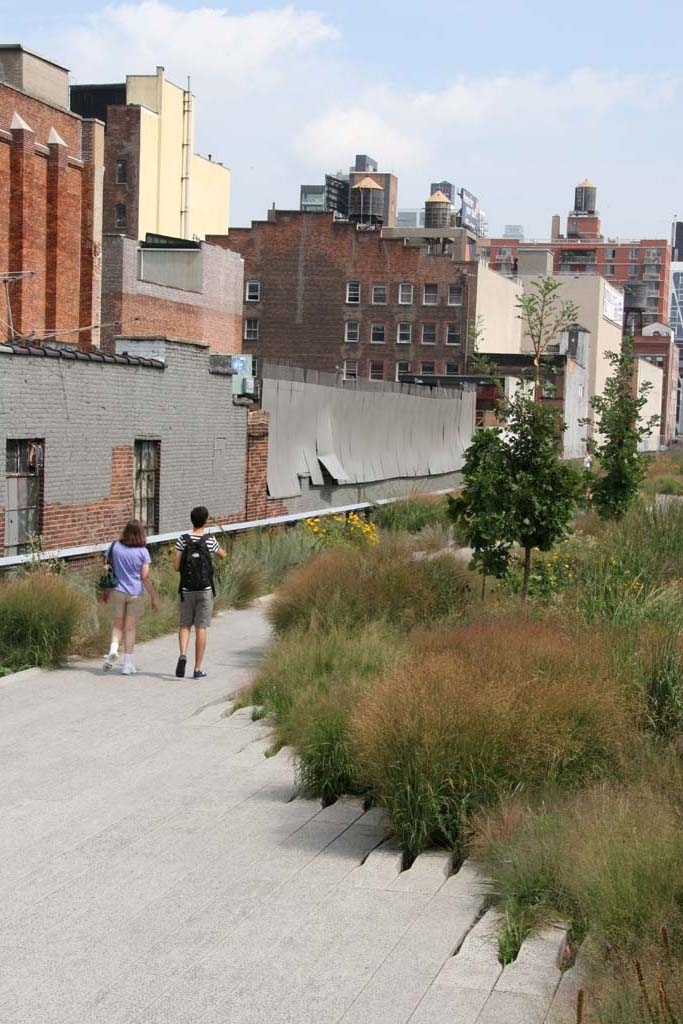
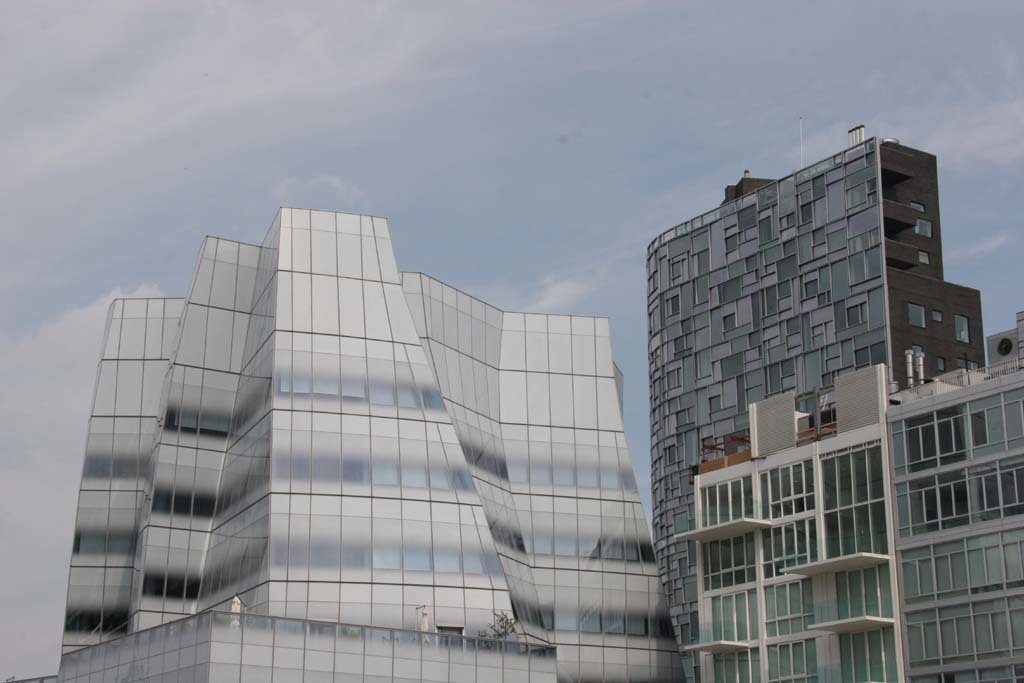
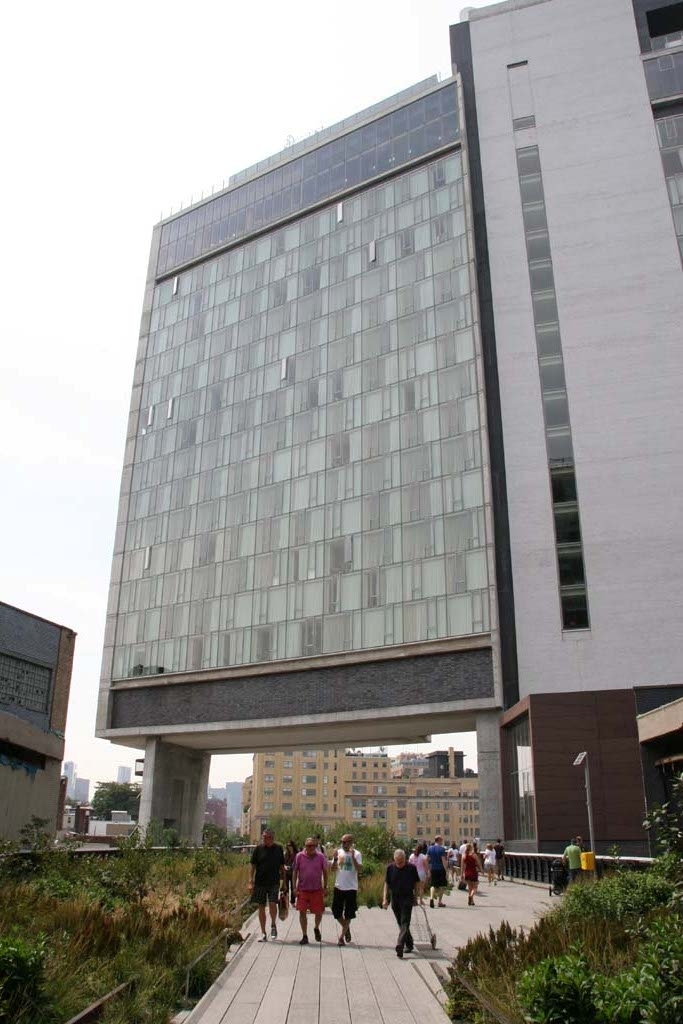
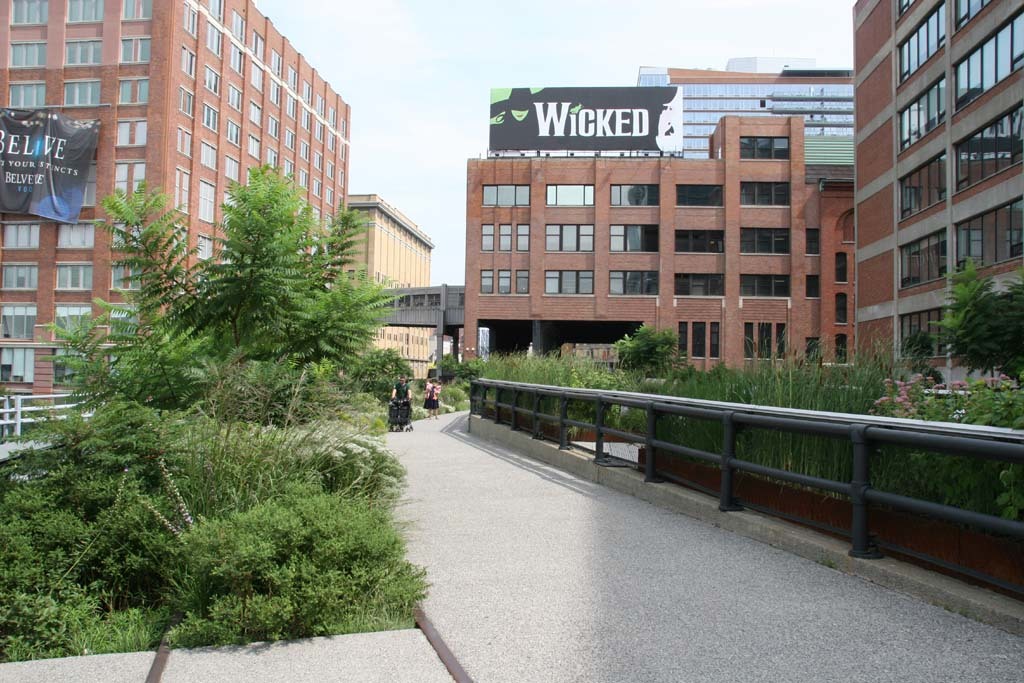 May 16, 2011 at 6:11 pm #162942
May 16, 2011 at 6:11 pm #162942 Trace OneParticipant
Trace OneParticipantPaley depends on being enclosed, of course, but it does not depend on the architecture of the enclosure, so I beg to differ, Jason..Those walls are just walls.
But Paley is probably not the best example, since it is so urban – is is just one of my favorites for great design..
My point remains, I think the that one gets the distinct feeling from the article that Wytold hates the Hi Line..
Interesting photos, thank you.
May 17, 2011 at 10:26 am #162941 idaParticipant
idaParticipantI don’t think he hates it, he even states, “it succeeds because it offers a green outlet to its many neighbors…”
I think what he doesn’t like is that cities have a “build it and they will come” mentality and are ignoring the fact that New York City is dense and has history, which is why a project like the HL can be successful. He cautions cities not to assume that to revive a downtown you suddenly have to build an elevated park or do any other “quick fix”, but that it will take decades and a push to densify to make any downtown successful. The article is a critique on urban planning strategies, not so much on landscape design 🙂
I’ve been in the area before it opened. The area would be great with or without the HL simply because there are many things to do there. That can also be said with any other high profile designs around there too, the Gehry bldg, Jean Nouvel bldg… The cool designs definitely work to attract people and raise property value, but it’s the programming of the area that keeps people there and makes them want to come back.
May 17, 2011 at 2:06 pm #162940 Trace OneParticipant
Trace OneParticipantok, I give
: )
May 18, 2011 at 2:59 am #162939 idaParticipant
idaParticipanthehe, I apologize if I sounded harsh, don’t mean to be at all 🙂
May 18, 2011 at 5:14 am #162938 Thomas J. JohnsonParticipant
Thomas J. JohnsonParticipant1. Um, I believe that’s called “context”.
Would High Line be as successful in the middle of a desert with no people to visit it? No, probably not.
2. All significant public projects go over budget and beyond schedule… it’s the nature of the beast. I wish that wasn’t the case and I don’t support creating new taxes that hurt small business, but it is what it is… You can criticize it, but the success of the project speaks for itself.
A few of my favorite quotes…
“The use of landscapes to influence urban development dates back 150 years, to when Frederick Law Olmsted and Calvert Vaux laid out Central Park, so it is not entirely clear that landscape urbanism is really so new.” – If anything, High-Line is a response to urban development not an influencing factor. It makes use of old infrastructure in new ways, without modifying the surrounding architecture. It is a small gesture (compared to central park) that speaks volumes about our modern values. Oh, and landscape architecture is a little older than 150 years… That’s like saying architecture has been influencing urban development for 150 years. It just sounds absurd and uninformed.
Then we have, “Sadly, the dismal record of failed urban design strategies is long: downtown shopping malls, pedestrianized streets, underground passages, skyways, monorails, festival marketplaces, downtown stadiums — and that most elusive fix of all, iconic cultural buildings. It appears likely that we will soon be adding elevated parks to the list.” I literally laughed out loud when I read this excerpt. He has to be kidding. It’s as if he listed the most successful design strategies in history and labeled them all as failed, just to see if anyone is paying attention… I could list numerous successful projects for each category but that would be a waste of time. He is obviously set in his ways.
Rybczynski is a professor of Urban Planning at U Penn. Corner is Chair of the Landscape Architecture school at U Penn. Obviously there is more going on here than meets the eye. Why the pi$$ing match? To me, this article reeks of “sour grapes”. Is Rybczynski feeling left out of the lime-light? Why does he feel the need to drag his colleague down in order to raise himself up? A Clearing in the Distance is a fine book but it’s no High_Line…
May 18, 2011 at 1:13 pm #162937 Trace OneParticipant
Trace OneParticipantInteresting points, Thomas..Forgot they know each other pretty well..
I agree about Wytold, though..His opinions seem so ridiculous, and completely indefensible, often – and ihis little essays, with their far-fetched analyzing, have absolutely no consequences.. Will this article influence anyone anywhere who has an opportunity to do an elevated park? No…
I would love to have his job..
: )
May 18, 2011 at 2:12 pm #162936 Jason T. RadiceParticipant
Jason T. RadiceParticipant“It’s as if he listed the most successful design strategies in history and labeled them all as failed, just to see if anyone is paying attention…”
I’d have to furvently disagree with your analysis. Rybczynski is referring to the “gimmick” planning that has been pervasive since the 1960’s. Sure, there are some examples of projects he stated tha have succeeded, but for every one that worked, there are dozens that haven’t. Many cities looked at some sucessful project and say “lets do that here”, and it winds up costing tons of money and has little if not negative results. Mayors pushed the whole “hope” angle for their failing downtowns and wanted to put their name on a building project that would be a great ribbon-cutting that would help their reelection, the results of which wouldn’t be seen until they were long out of office. Most downtown malls have been long ripped down or are virtually empty (these were big in the 80s), pedestrianized streets were a relic of the 70’s, and most big cities have removed them. These are making a comeback, but they have to be done CORRECTLY (see Jan Gehl). This one made it to Small Town America as well. Again, most have been reverted back to the way they were. Stadiums and convention centers are huge wastes of taxpayer monies and rarely live up to their economic promises, even in large cities.
The “build it and they will come” mentalility has to stop in urban planning, there is 30+ years of experimentation and evidence that it just doesn’t work. These “tricks” were tried and found to be erronious by multitudes of examples in both large and small cities in the rust-belt. Often, more than one “gimmick” was used over the decades, what ever was in fashion. You can check the boxes and guess the date with great accuracy. The particular town I grew up in had the skyways (70’s), a downtown arena (70’s) and stadium (90’s), pedestrianized streets (70’s-80’s), a downtown shopping mall (80’s) and a festival market…all have failed, lose tons of money, or were torn down/repurposed.
Having read most of Rybczynski’s books, hearing him speak, and meeting him a few times, I think I can clear up his thinking for you. His text comes as a warning that just because the High-Line works in Chelsea, it doesn’t mean it that iteration will work someplace else, the variables are too great between the different sites. Perhaps a simple bike path is more appropriate or just an outright removal of the elevated railine would be best. Another thing to keep in mind is that these structures often became barriers to connecting neighborhoods, and have KILLED once thriving neighborhoods. Their removal (like so many elevated highways recently) would offer the opportunity to mend the fabric of dense urbanity. BTW, while a good LA scholar, Corner’s work is kind of one note and seems to be style over substance.
May 18, 2011 at 2:51 pm #162935 Trace OneParticipant
Trace OneParticipantYou do have a point Jason..I was shocked to find the Fresno has a plan for an aquarium, that thankfully has yet to get built – not even an aquarium of native species, a full-fledged aquarium, here in the central valley..seems stupid to m e..On the other hand, Charlottesvilles Main Street that was closed to cars in the seventies is extremely successful, after a few lean years..
But I have to disagree with your thing about elevated structures killing neighborhoods..My grandma lived next to the Elevated, on Jerome Avenue, in the Bronx, and there was nothing about that neighborhood that suffered from being next to the El at all..
Highways somehow create worse wastelands than elevated trains, I don’t know why…But that track in the Bronx was pretty great, as neighborhoods go..The Entemanns factory was there, and the neighborhood was filled with the smell of fresh baking Entemanns..
-
AuthorPosts
- You must be logged in to reply to this topic.


